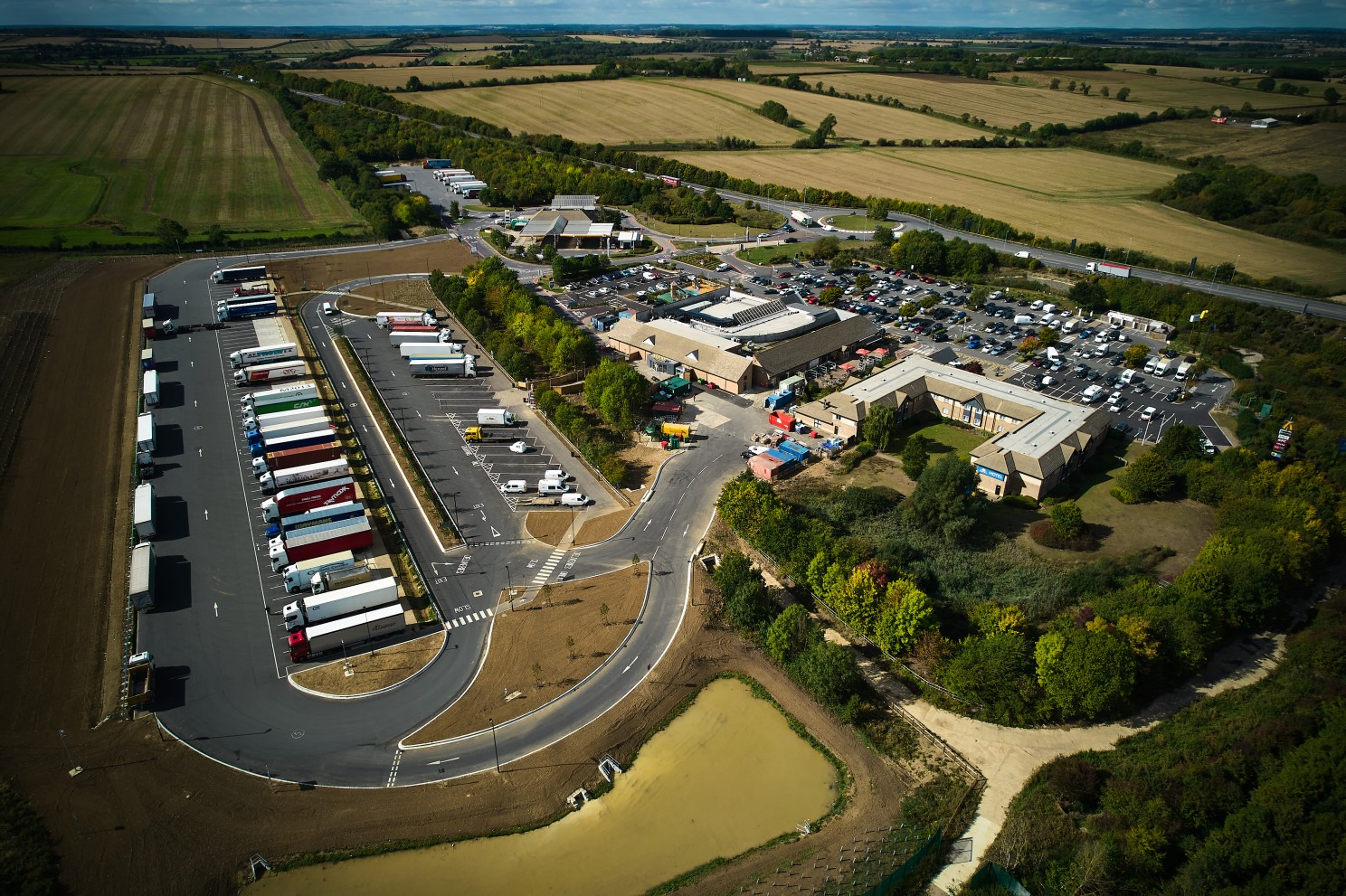
Josh Cousens
Un partenariat stratégique : L'approche du SNAP et d'Extra en matière de stationnement des camions
Créée: 01/08/2024
•
Mise à jour : 13/08/2024
Le directeur Ross Mendenhall explique comment SNAP a aidé Extra Motorway Service Area (MSA) à augmenter la croissance de son chiffre d'affaires sur l'ensemble de son réseau jusqu'à 8 % par an depuis le début de notre collaboration en 2011.
"L'un des principaux avantages pour nous est que la base de clients SNAP s'élargit constamment, ce qui nous permet d'atteindre 30 000 clients potentiels supplémentaires par an", explique Ross Mendenhall, qui utilise SNAP pour optimiser les activités de stationnement de camions d'Extra.
Ross explique son rôle chez Extra : "Je supervise notre réseau de huit MSA à travers l'Angleterre, en veillant à ce que nous disposions du meilleur environnement de travail et des meilleurs processus, ce qui nous permet d'offrir une satisfaction maximale à nos clients, et en travaillant en collaboration avec notre PDG pour veiller à ce que nous nous concentrions sur nos ambitions de croissance.
"Je travaille également en étroite collaboration avec nos fournisseurs et nos marques locataires pour veiller à ce que nous offrions la meilleure expérience possible à tous ceux qui visitent nos MSA".
Aires de service autoroutières supplémentaires
Après avoir ouvert son premier site à Cambridge en 2000, Extra est aujourd'hui l'un des plus grands opérateurs de services autoroutiers du Royaume-Uni. Lors de la dernière enquête Transport Focus Motorway Service Users, Extra a été élu premier opérateur pour la satisfaction de ses clients au Royaume-Uni.
Ross déclare : "Au cœur de notre philosophie d'entreprise se trouve notre engagement à "aller plus loin" afin d'offrir une expérience exceptionnelle à tous nos visiteurs.
"Nous sommes particulièrement fiers de proposer un large éventail de marques de nourriture et de boissons parmi les plus appréciées au Royaume-Uni, des espaces extérieurs pittoresques avec des aires de promenade pour chiens et des aires de jeux pour enfants, ainsi que des installations sûres, propres et de grande qualité pour le plus grand plaisir de tous".
En 2023, il y aura 260 066 stationnements SNAP dans les aires de service extra-autoroutières.

Entrer SNAP
Ayant commencé à travailler avec SNAP en 2011, Ross explique comment le partenariat a aidé Extra à développer son service de parking pour camions. "SNAP nous aide à communiquer nos services clés aux conducteurs de poids lourds et aux flottes, en leur offrant une visibilité sur nos capacités de stationnement, de carburant et de lavage.
"Nous nous sommes engagés à augmenter le taux de satisfaction des chauffeurs de poids lourds qui s'arrêtent chez nous et faire partie du réseau SNAP nous permet justement d'y parvenir. Grâce à l'application, nous pouvons développer nos partenariats et nos ventes organiques en offrant aux clients un outil efficace pour en savoir plus sur nos installations, notamment sur la façon dont nous pouvons rendre leur séjour agréable, relaxant et sécurisé."
Comment s'est déroulée la procédure d'installation ?
Nous voulions savoir s'il y avait eu des complications au début de la relation.
Ross déclare : "C'était très simple. L'équipe SNAP était à notre disposition pour répondre à toutes nos questions et, même une fois l'installation terminée, elle était heureuse d'écouter nos commentaires sur la manière dont le système pouvait être amélioré pour mieux répondre à nos besoins."
Croissance des recettes
Nous avons demandé à Ross si le SNAP avait aidé Extra à augmenter ses revenus :
"Notre partenariat avec SNAP nous a permis d'augmenter régulièrement notre chiffre d'affaires, qui a progressé de 8 % en glissement annuel et de 2 % pour les transactions.
"Nos services à Cambridge et Peterborough ont connu la plus forte amélioration en glissement annuel, avec 11 % et 12 %. De plus, nos services à Peterborough, Leeds et Cambridge sont maintenant tous occupés à plus de 100 %."

SNAP Access & Security
Après plusieurs années de collaboration fructueuse, Extra nous a demandé en 2018 si nous pouvions l'aider à améliorer ses installations de sécurité.
"Nous avons renforcé notre partenariat avec SNAP au fil des ans, en investissant dans des technologies de vidéosurveillance et d'identification automatique pour garantir une sécurité maximale.
"L'installation de technologies de sécurité sur nos huit sites nous a aidés à protéger nos revenus, en veillant à ce que chaque véhicule paie pour la durée exacte de son séjour.
"L'impact de la collaboration avec SNAP Access & Security a été presque immédiat - avec une augmentation enregistrée des revenus générés par le stationnement d'environ 20 % depuis la mise en service.
"En outre, la sécurité étant l'une des priorités des chauffeurs routiers lorsqu'ils s'arrêtent pour une longue période, nous sommes heureux de contribuer à rendre leur séjour plus agréable en les rassurant sur le fait que nous avons mis en place des mesures complètes pour aider à minimiser le risque de vol.
"L'accès aux tableaux de bord de SNAP nous permet également de contrôler les données en temps réel, ce qui nous permet d'offrir la meilleure expérience possible aux utilisateurs", déclare M. Ross.
La meilleure partie
Pour conclure l'entretien, nous avons voulu demander à Ross ce qu'il pensait être le meilleur aspect de son travail avec SNAP :
"L'impact sur l'efficacité du personnel est un succès majeur pour nous. L'introduction du système ANPR, combiné aux terminaux de paiement, offre aux conducteurs une option de libre-service, ce qui signifie que le personnel peut se concentrer sur d'autres tâches essentielles telles que le nettoyage, l'entretien et le service à la clientèle.
"La flexibilité offerte par les terminaux de paiement est également un atout majeur : les conducteurs peuvent utiliser les terminaux de paiement en 15 langues, ce qui améliore l'expérience du client et réduit les problèmes liés à la barrière de la langue.
Pour en savoir plus sur les partenaires Extra Service du réseau SNAP, consultez dès aujourd'hui la Carte SNAP . Si vous proposez des parkings pour camions et souhaitez rejoindre le réseau SNAP, renseignez-vous ici.



